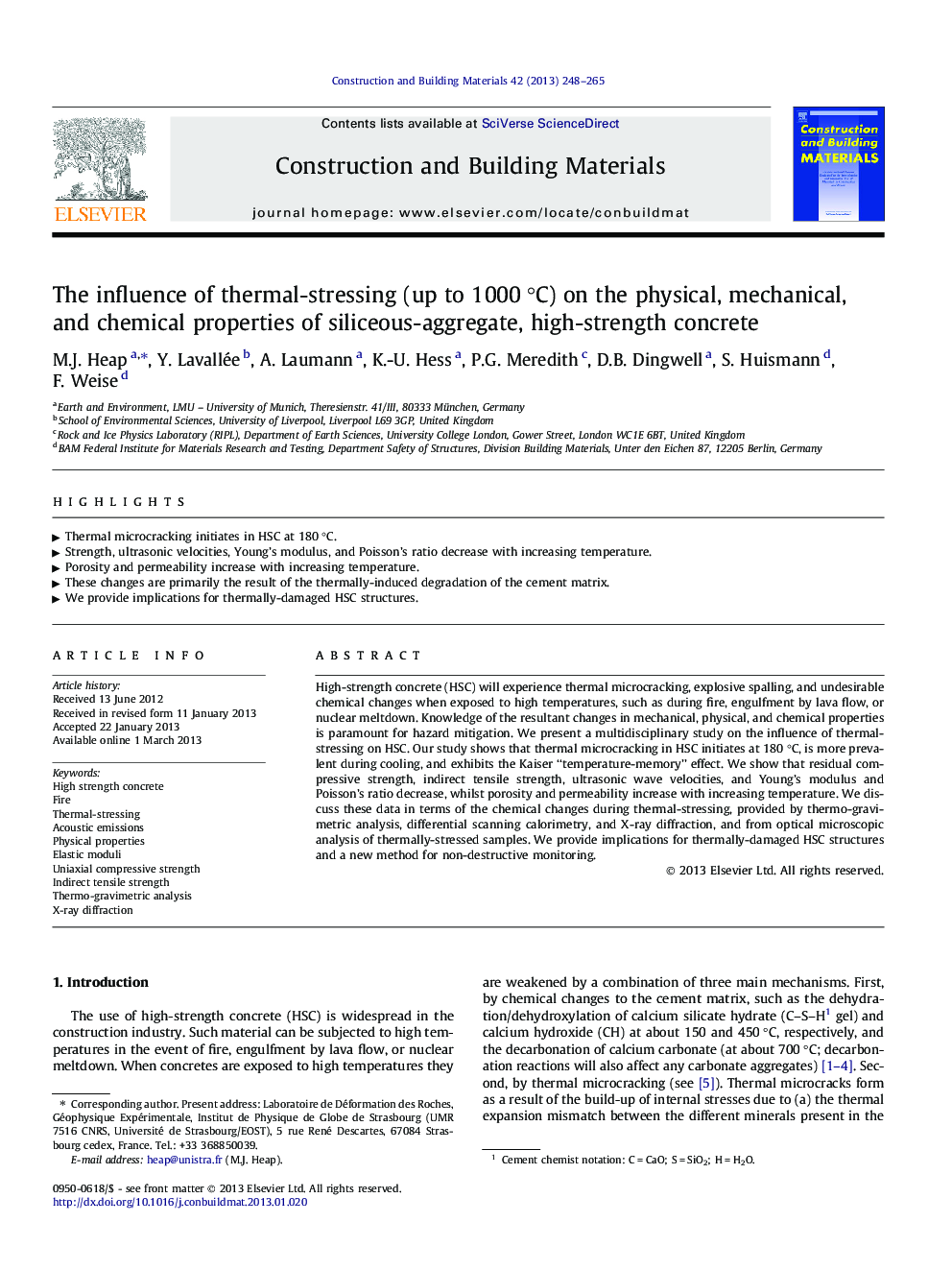| کد مقاله | کد نشریه | سال انتشار | مقاله انگلیسی | نسخه تمام متن |
|---|---|---|---|---|
| 258362 | 503616 | 2013 | 18 صفحه PDF | دانلود رایگان |

High-strength concrete (HSC) will experience thermal microcracking, explosive spalling, and undesirable chemical changes when exposed to high temperatures, such as during fire, engulfment by lava flow, or nuclear meltdown. Knowledge of the resultant changes in mechanical, physical, and chemical properties is paramount for hazard mitigation. We present a multidisciplinary study on the influence of thermal-stressing on HSC. Our study shows that thermal microcracking in HSC initiates at 180 °C, is more prevalent during cooling, and exhibits the Kaiser “temperature-memory” effect. We show that residual compressive strength, indirect tensile strength, ultrasonic wave velocities, and Young’s modulus and Poisson’s ratio decrease, whilst porosity and permeability increase with increasing temperature. We discuss these data in terms of the chemical changes during thermal-stressing, provided by thermo-gravimetric analysis, differential scanning calorimetry, and X-ray diffraction, and from optical microscopic analysis of thermally-stressed samples. We provide implications for thermally-damaged HSC structures and a new method for non-destructive monitoring.
► Thermal microcracking initiates in HSC at 180 °C.
► Strength, ultrasonic velocities, Young’s modulus, and Poisson’s ratio decrease with increasing temperature.
► Porosity and permeability increase with increasing temperature.
► These changes are primarily the result of the thermally-induced degradation of the cement matrix.
► We provide implications for thermally-damaged HSC structures.
Journal: Construction and Building Materials - Volume 42, May 2013, Pages 248–265